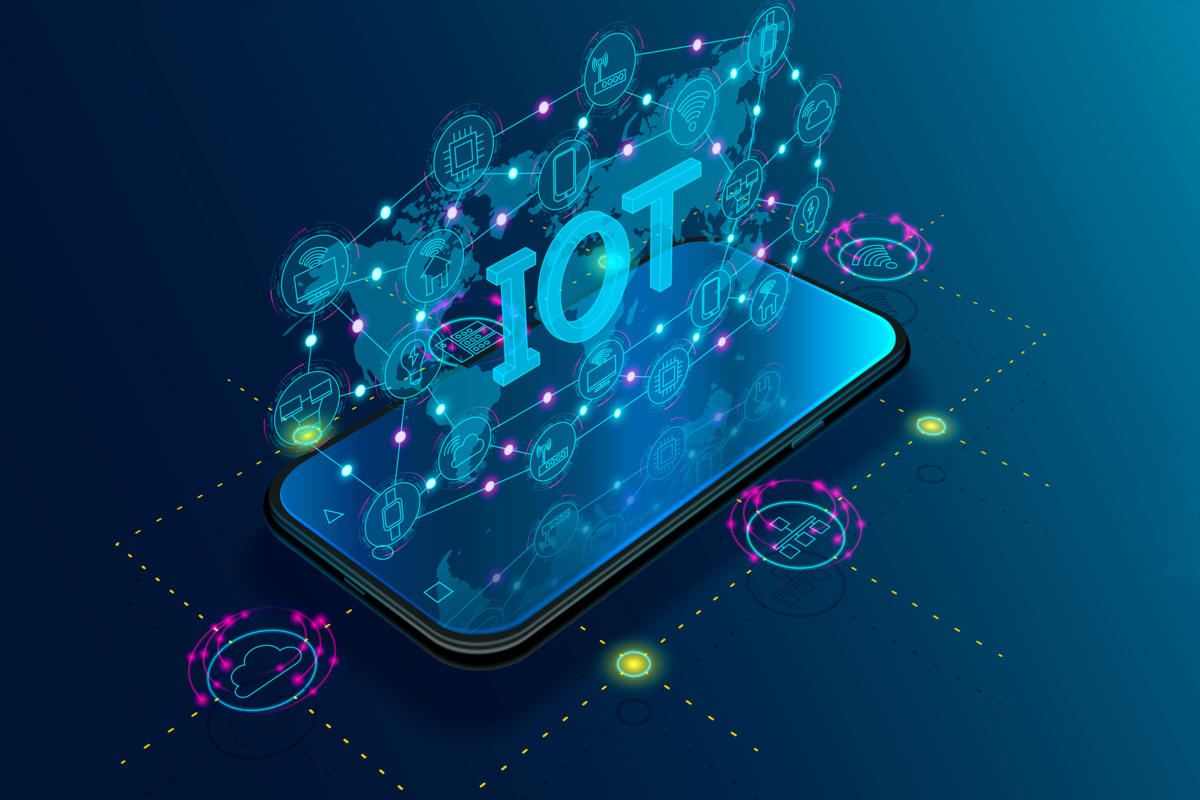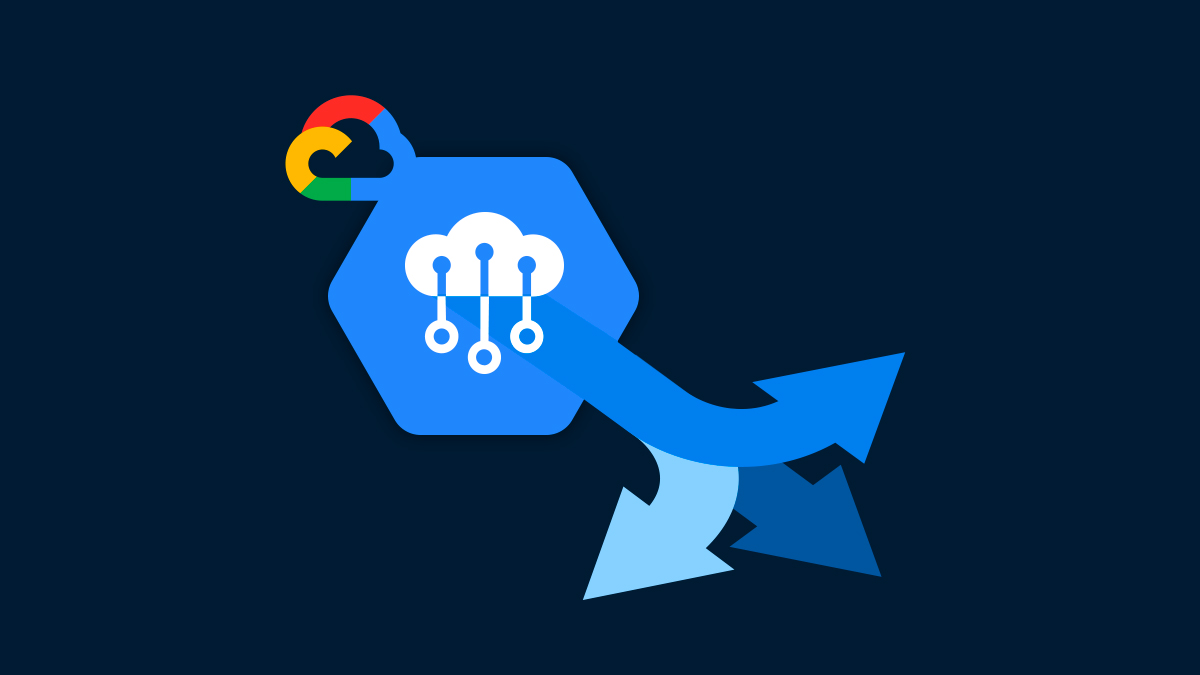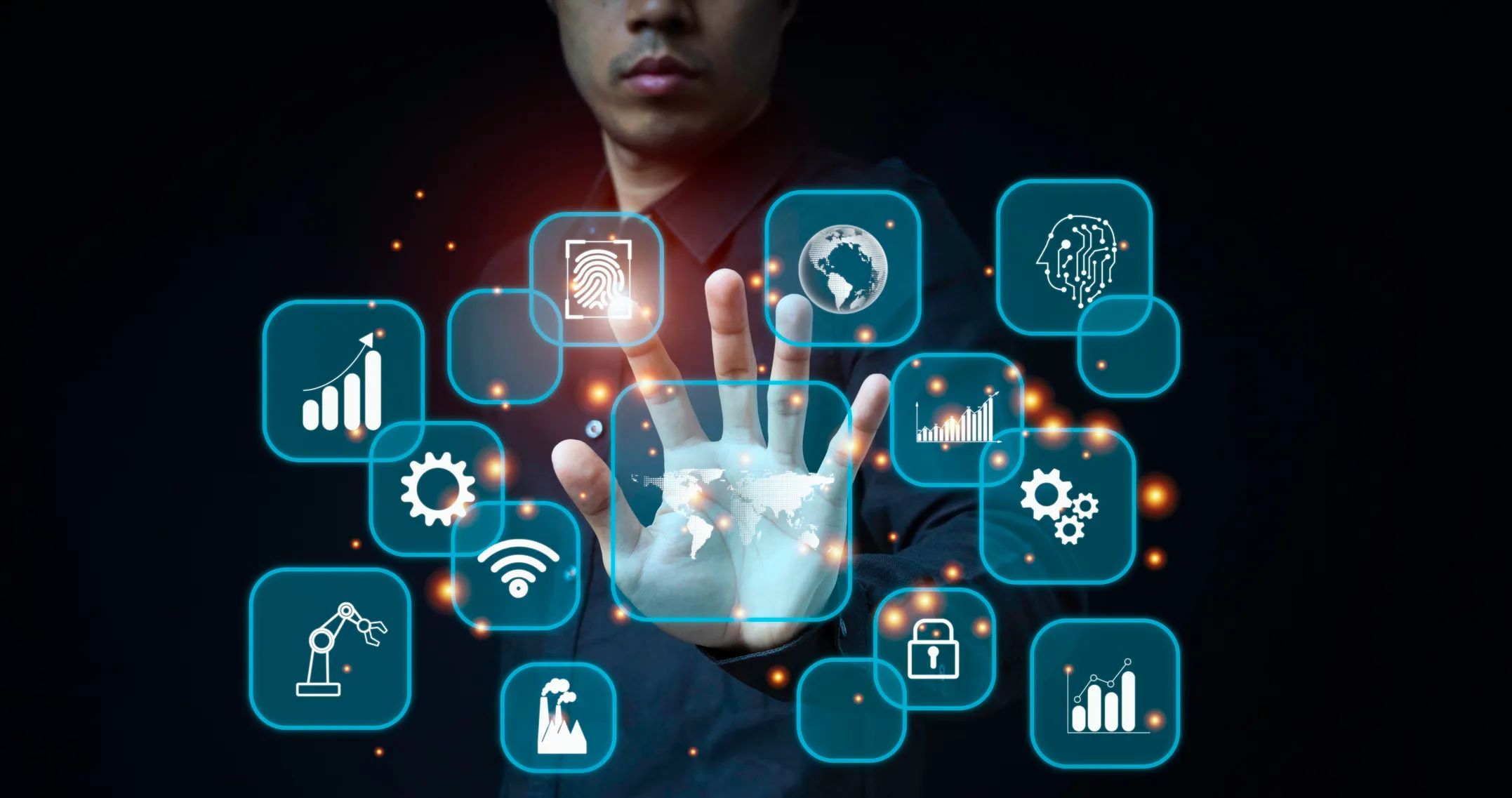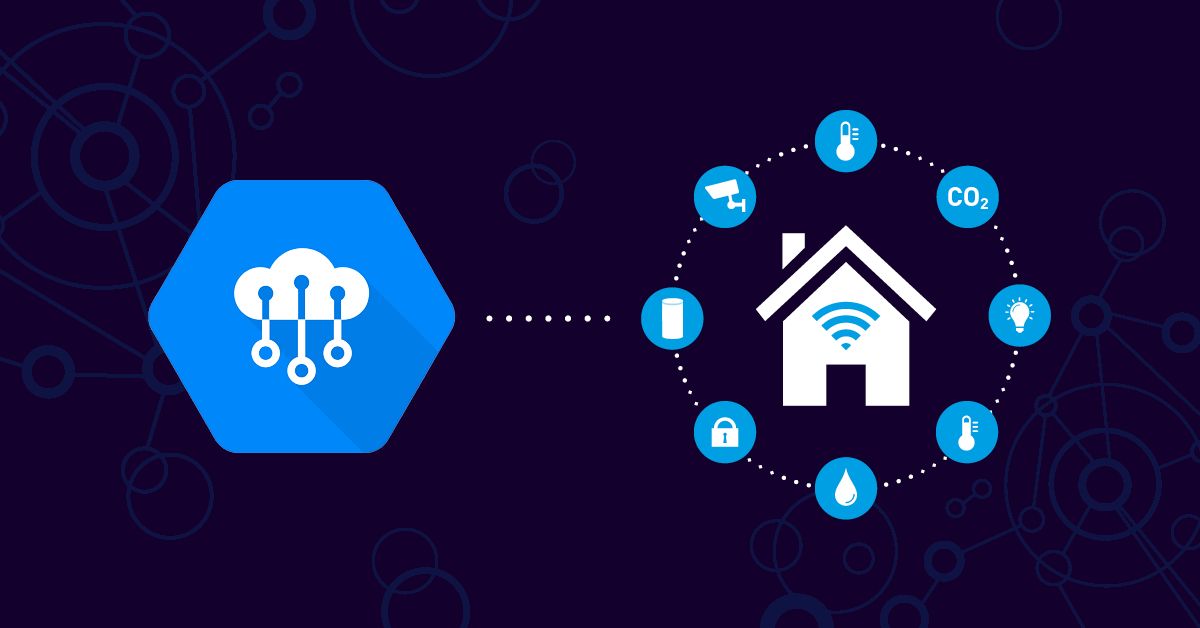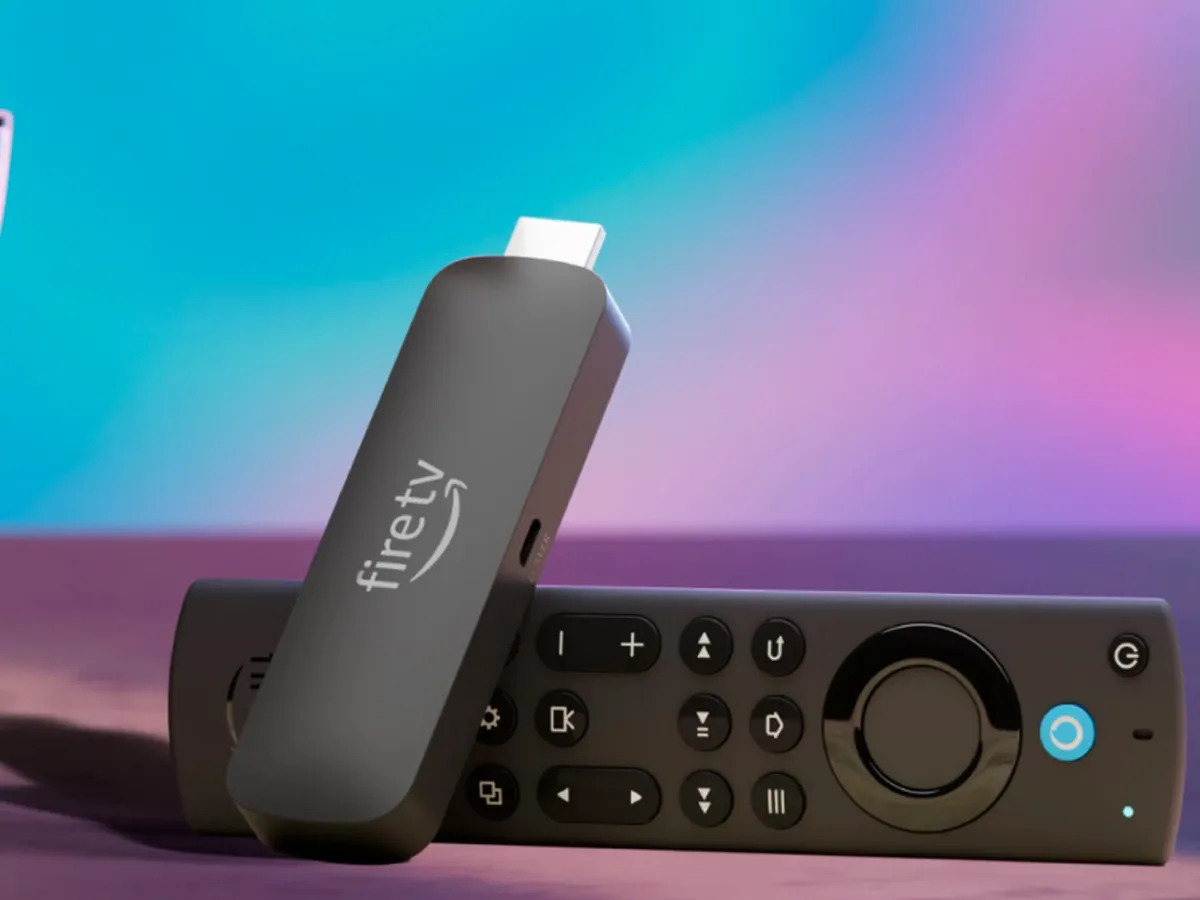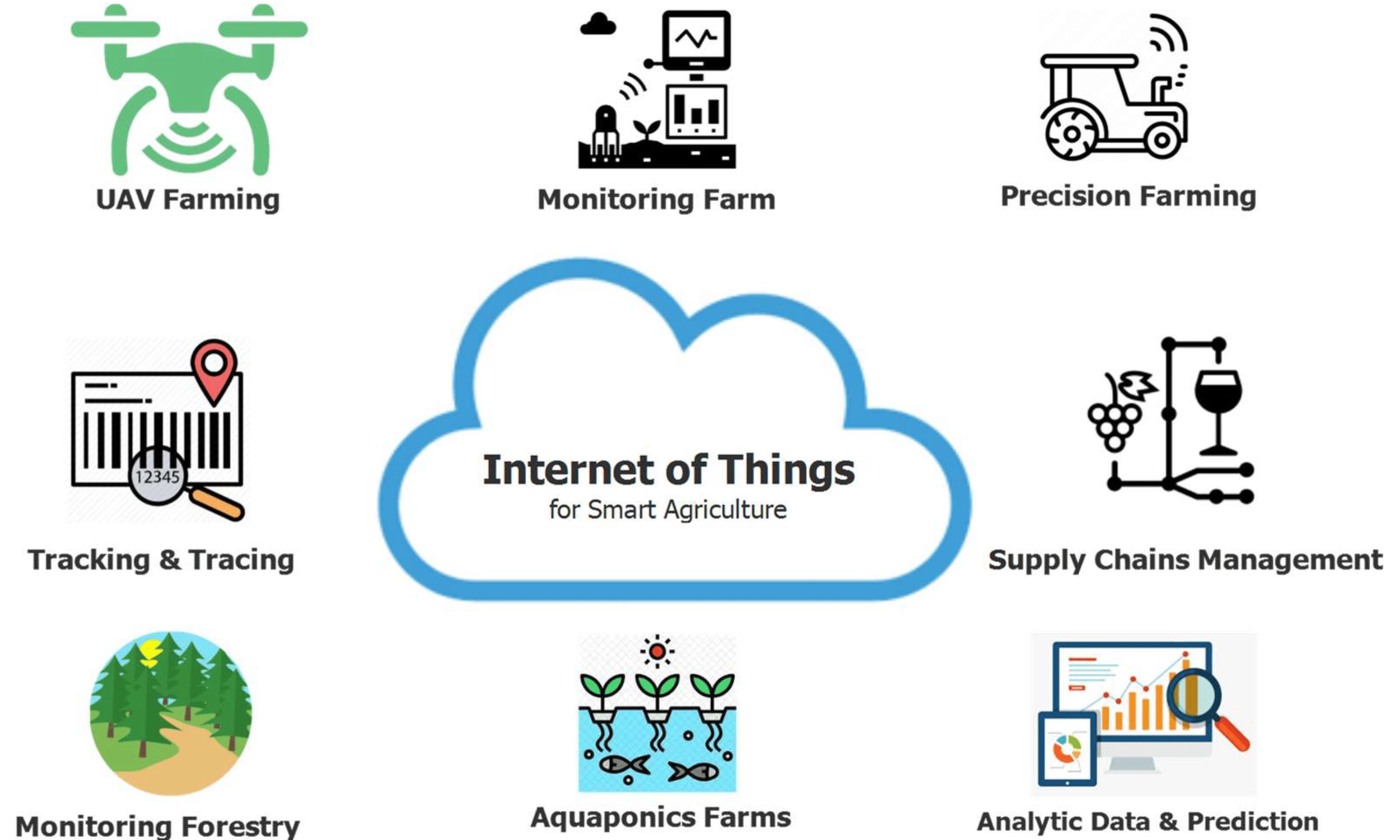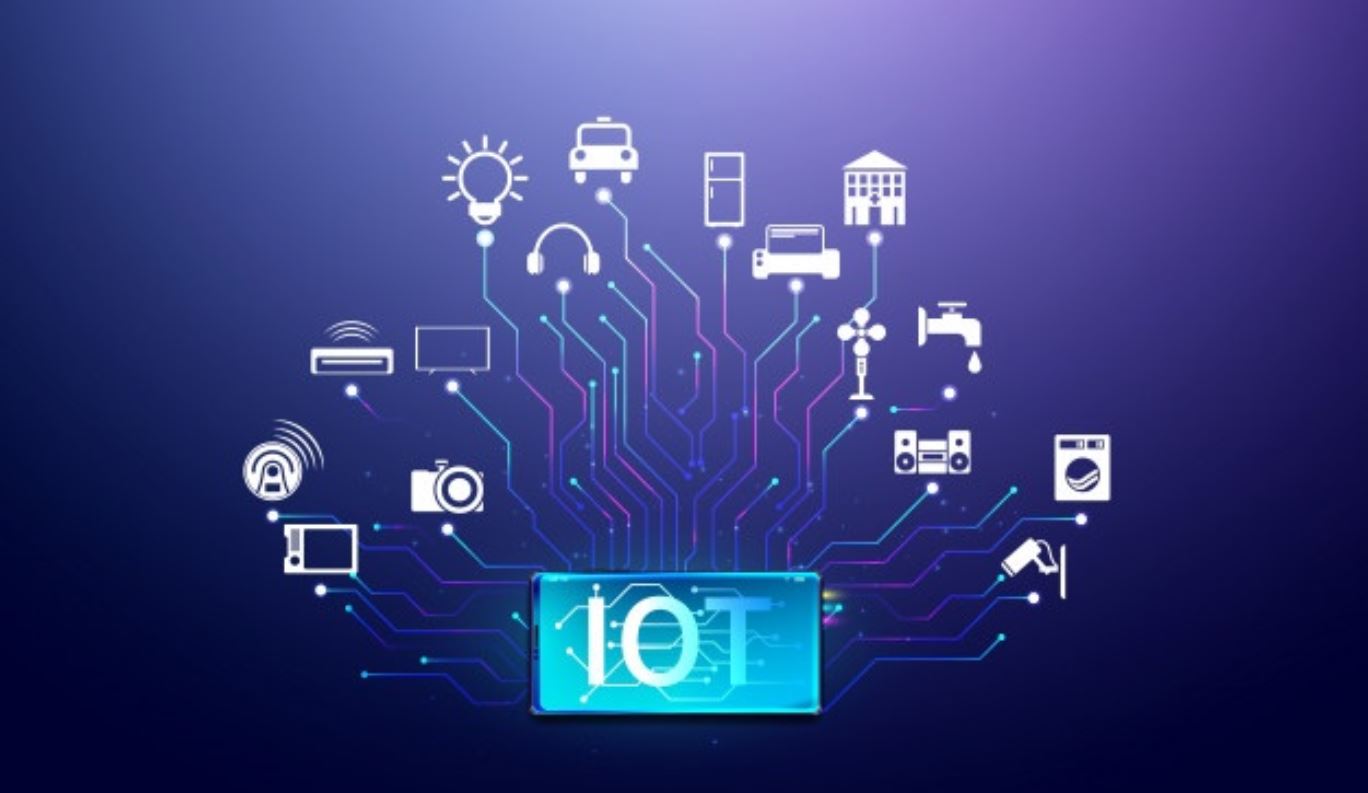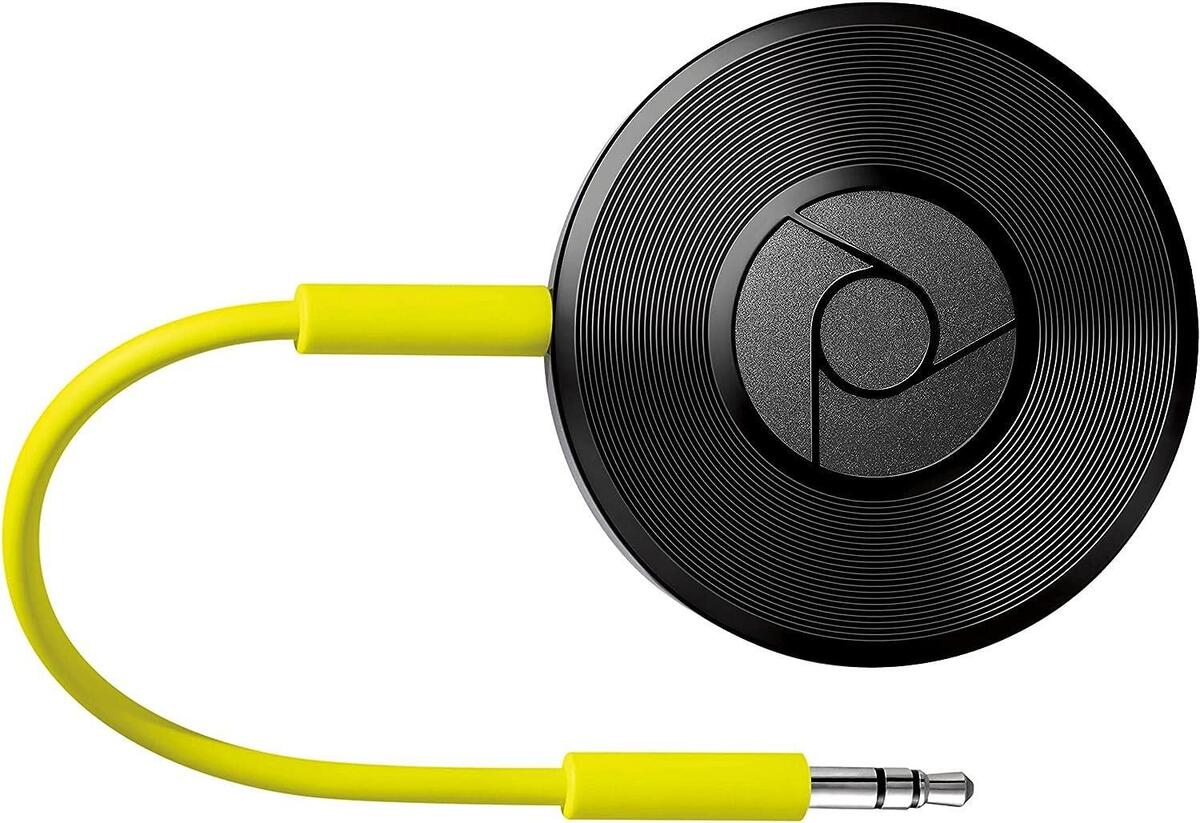Introduction
Welcome to the fascinating world of the Internet of Things, commonly known as IoT. In this modern technological era, IoT has become a significant buzzword, revolutionizing the way we interact with the digital world. From smart homes to industrial automation, IoT is reshaping every aspect of our lives, driving innovation and improving efficiency.
So, what exactly is IoT? In simple terms, IoT refers to the network of interconnected devices that can communicate and exchange data with each other over the internet. These devices range from everyday objects like smartphones and smartwatches to complex systems such as industrial machinery and healthcare equipment. By connecting these devices, IoT enables seamless communication, data transfer, and automation, creating a vast ecosystem of smart and interconnected products.
The growth of IoT has been exponential, driven by advancements in technology and the increasing demand for connected devices. According to estimates, there will be over 75 billion IoT devices worldwide by 2025, generating a staggering amount of data. This data is the fuel that powers IoT, providing valuable insights and enabling intelligent decision-making.
The impact of IoT on various industries and sectors is profound. In healthcare, IoT devices like wearable fitness trackers and remote monitoring systems allow for personalized health monitoring and improved patient care. In agriculture, IoT sensors and automation systems optimize irrigation, crop monitoring, and livestock management, leading to enhanced productivity and sustainability.
IoT also holds immense potential in the manufacturing sector. By connecting machines and equipment, manufacturers can achieve real-time insights into production processes, identify bottlenecks, and optimize efficiency. This not only improves productivity but also reduces downtime and maintenance costs.
Beyond these industries, IoT has found its way into our daily lives. Smart home devices like thermostats, security systems, and voice assistants allow for seamless control and automation, making our lives more convenient and efficient. Furthermore, IoT technology is facilitating the development of smart cities, enabling efficient energy management, traffic control, and waste management systems.
What is IoT?
The Internet of Things (IoT) refers to the network of interconnected physical devices embedded with sensors, software, and other technologies, enabling them to gather and exchange data over the internet. These devices can range from everyday objects like smartphones, appliances, and cars to industrial machinery, medical equipment, and even streetlights.
The key idea behind IoT is to create a seamless and intelligent ecosystem where these devices can communicate and interact with each other, as well as with humans, without the need for human intervention. This connectivity allows for the collection of vast amounts of data, which can then be analyzed and utilized to make informed decisions, automate processes, and enhance overall efficiency.
IoT devices are equipped with sensors that can collect data on various parameters, such as temperature, humidity, motion, and location. This data is then transmitted to a centralized platform or the cloud, where it is stored, analyzed, and used to trigger specific actions or provide valuable insights.
The communication between IoT devices can occur through various protocols and technologies, including Wi-Fi, Bluetooth, RFID, and cellular networks. This flexibility in connectivity options makes it possible for devices to be seamlessly integrated into existing infrastructures and for data to be transmitted quickly and reliably.
One of the fundamental characteristics of IoT is its ability to enable automation and intelligence. With IoT, devices can be programmed to perform specific tasks automatically based on predefined conditions or triggers. For example, a smart thermostat can automatically adjust the temperature based on occupancy and time of day, leading to energy savings and enhanced comfort.
Furthermore, IoT opens up new possibilities for insights and decision-making. By analyzing the data collected from IoT devices, businesses and organizations can gain valuable insights into customer behavior, market trends, and operational efficiency. These insights can help drive innovation, improve processes, and ultimately, create new business opportunities.
Growth of IoT
The growth of the Internet of Things (IoT) has been nothing short of remarkable. Over the past decade, we have witnessed a significant surge in the number of connected devices, driven by advancements in technology and the increasing demand for smart and interconnected systems.
According to industry reports, the number of IoT devices is expected to surpass 75 billion by 2025. This exponential growth can be attributed to several factors. Firstly, the decreasing costs of sensors and connectivity technologies have made it more affordable for businesses and individuals to adopt IoT solutions. As a result, we are seeing a wide range of industries and sectors embracing IoT, from healthcare and manufacturing to agriculture and transportation.
The proliferation of smartphones and mobile devices has also contributed to the growth of IoT. These devices act as gateways for IoT devices, allowing users to control and monitor their connected devices remotely. With the increasing popularity of smart homes and wearable technology, more and more consumers are becoming familiar with IoT and are eager to incorporate it into their daily lives.
Another driving force behind the growth of IoT is the advancement in data analytics and cloud computing. IoT generates a massive amount of data, and organizations are now equipped with powerful tools and technologies to process and derive meaningful insights from this data. Cloud platforms provide the necessary infrastructure and scalability to store and analyze vast amounts of data, making it easier for businesses to implement IoT solutions.
Furthermore, the emergence of 5G technology is expected to accelerate the growth of IoT. With its ultra-fast speeds and low latency, 5G enables real-time communication and seamless connectivity, paving the way for more advanced and reliable IoT applications. This technology will be particularly crucial for industries that require low latency and high bandwidth, such as autonomous vehicles, smart cities, and remote healthcare.
As IoT continues to expand, so does its impact on the global economy. It is estimated that IoT will contribute trillions of dollars to the global GDP in the coming years. Industries that embrace IoT can benefit from increased efficiency, reduced operational costs, improved safety, and enhanced customer experiences. Moreover, IoT has the potential to drive innovation and create new business models, opening up vast opportunities for entrepreneurs and startups.
While the growth of IoT is impressive, it also presents unique challenges. Security and privacy concerns remain a significant issue, as connected devices become more susceptible to cyberattacks. Moreover, the interoperability and standardization of IoT devices and platforms are crucial to ensure seamless integration and widespread adoption.
The future of IoT looks promising, as advancements in technology continue to push the boundaries of what is possible. As more devices become connected and intelligent, we can expect IoT to revolutionize industries, transform our cities, and enhance our daily lives in ways we could never have imagined.
The Impact of IoT
The Internet of Things (IoT) has had a profound impact on various aspects of our lives, transforming industries, improving efficiency, and enhancing our overall quality of life. Let’s explore some of the key areas where IoT has made a significant impact.
1. Healthcare: IoT has revolutionized the healthcare industry by enabling remote patient monitoring, personalized care, and improved treatment outcomes. Wearable devices, such as fitness trackers and smartwatches, provide real-time health data, allowing individuals to track their vital signs and monitor their overall well-being. IoT devices also enable remote monitoring of patients with chronic conditions, allowing healthcare professionals to receive instant updates on their condition and intervene when necessary. This not only improves patient care but also reduces healthcare costs and hospital readmissions.
2. Manufacturing: IoT has reshaped the manufacturing industry, introducing the concept of “smart factories.” Connected machines and sensors provide real-time data on production processes, allowing for predictive maintenance, automated quality control, and streamlined supply chain management. This results in increased productivity, reduced downtime, and cost savings for manufacturers.
3. Transportation and Logistics: IoT has transformed the transportation and logistics sector by enabling real-time tracking and monitoring of vehicles, assets, and shipments. Connected sensors provide valuable data on temperature, humidity, and location, ensuring the safe transportation of goods, optimizing delivery routes, and improving overall efficiency. This leads to reduced transportation costs, enhanced customer satisfaction, and improved sustainability.
4. Agriculture: IoT has played a crucial role in modernizing the agricultural industry. Smart farming techniques, such as precision agriculture, utilize IoT sensors and data analytics to monitor soil moisture levels, weather conditions, and crop health. This data-driven approach enables farmers to optimize irrigation, fertilization, and pest control, leading to increased crop yields, reduced resource wastage, and improved sustainability.
5. Smart Homes and Cities: IoT has brought intelligence and automation into our homes and cities. Smart home devices, such as thermostats, lighting systems, and security systems, can be controlled and monitored remotely, enhancing convenience, energy efficiency, and security. In smart cities, IoT technologies enable efficient energy management, smart traffic control, waste management systems, and improved public safety.
6. Environmental Sustainability: IoT has been instrumental in addressing environmental challenges. Connected sensors and devices help monitor and manage energy consumption, water usage, and air quality, enabling better resource allocation and conservation. IoT also facilitates the integration of renewable energy sources into power grids, contributing to a more sustainable and cleaner environment.
The impact of IoT extends far beyond these sectors, touching various aspects of our lives. From everyday tasks like turning off the lights with voice commands to complex systems that optimize industrial processes, IoT has revolutionized the way we interact with our environment. The possibilities for innovation and improvement are endless as IoT continues to evolve and shape the future.
Applications of IoT
The applications of the Internet of Things (IoT) are vast and diverse, revolutionizing numerous industries and improving our everyday lives. Let’s explore some of the key areas where IoT is being applied.
1. Smart Homes: IoT technology has transformed our homes into smart ecosystems. From smart thermostats that adjust temperature based on occupancy and weather conditions to smart appliances that can be controlled remotely, IoT allows for seamless communication and automation within the home environment. This enhances convenience, energy efficiency, and home security.
2. Healthcare: IoT has ushered in a new era of healthcare innovation. Wearable devices and remote monitoring systems enable individuals to track their vital signs, exercise, and sleep patterns, promoting preventive healthcare. IoT also facilitates remote patient monitoring, allowing healthcare professionals to monitor and intervene when necessary, improving patient care while reducing hospital stays and healthcare costs.
3. Industrial Automation: IoT has revolutionized the manufacturing sector, enabling the concept of industry 4.0. Connected sensors, machines, and systems provide real-time data on production processes, allowing for predictive maintenance, optimized inventory management, and streamlined supply chain operations. This results in increased productivity, reduced downtime, and improved overall efficiency.
4. Agriculture: IoT has found numerous applications in the agriculture industry, optimizing farming practices and increasing crop yields. Smart farming techniques, such as precision agriculture, utilize IoT sensors to monitor soil moisture levels, temperature, humidity, and crop health. This data-driven approach enables farmers to optimize irrigation, fertilization, and pest control, improving resource management and sustainability.
5. Smart Energy Management: IoT plays a vital role in optimizing energy consumption and improving energy efficiency. Connected devices, such as smart meters and smart grids, enable real-time monitoring, control, and optimization of energy distribution. This allows for better load management, peak-demand reduction, and integration of renewable energy sources, contributing to a more sustainable and efficient energy ecosystem.
6. Transportation and Logistics: IoT has transformed the transportation and logistics industry, enabling real-time tracking, monitoring, and optimization of vehicles, assets, and shipments. Connected sensors provide data on location, temperature, humidity, and other parameters, ensuring the safe transportation of goods and optimizing logistics operations. This leads to improved supply chain efficiency, reduced costs, and enhanced customer satisfaction.
7. Smart Cities: IoT technologies contribute to the development of smart cities, improving quality of life and resource management. Connected sensors and systems enable efficient traffic management, smart parking solutions, waste management, and environmental monitoring. This results in reduced congestion, improved sustainability, and enhanced safety and security for residents.
These applications of IoT represent just a snapshot of the possibilities it brings. With advancements in technology and increasing connectivity, the potential for innovative IoT applications across industries is limitless. From transforming how we live and work to addressing complex challenges, IoT continues to shape a smarter and more connected future.
Challenges in the IoT Space
The Internet of Things (IoT) presents a multitude of opportunities, but it also comes with its fair share of challenges. As the number of connected devices continues to increase, it is crucial to address these challenges to ensure the seamless integration and secure operation of IoT systems.
1. Security: Security is one of the most significant challenges in the IoT space. With billions of connected devices transmitting and receiving data, the risk of cyberattacks and unauthorized access is heightened. Weak security measures can lead to compromised personal data, privacy breaches, and even physical harm. It is essential to implement robust security protocols and encryption methods to safeguard IoT devices and the data they transmit.
2. Privacy: IoT devices collect vast amounts of personal data, raising concerns about privacy. Users are often unaware of the data that is being collected and how it is used. It is crucial to establish clear guidelines and regulations to ensure transparency and give users control over their data. Additionally, IoT devices should employ privacy-by-design principles, minimizing the collection and storing of sensitive information.
3. Interoperability: The lack of interoperability between different IoT devices and platforms is a major challenge. With numerous manufacturers and vendors developing their IoT solutions, compatibility issues arise, hindering seamless integration and communication between devices. Standardization efforts are needed to establish common protocols, interfaces, and data formats, allowing for interoperability and widespread adoption.
4. Scalability: As the number of IoT devices continues to grow, scalability becomes a significant challenge. IoT systems must be able to handle the massive amount of data generated, process it in real-time, and scale efficiently. The infrastructure supporting IoT, such as cloud computing and communication networks, need to be robust and scalable to accommodate the increasing demands.
5. Power Consumption: Many IoT devices are battery-powered, making power consumption a critical concern. Balancing the need for efficient operation with battery life is crucial, especially for devices that require long-term operation or are deployed in remote areas. Energy-efficient design techniques and low-power communication protocols aid in extending battery life and reducing power consumption.
6. Data Management and Analytics: With the proliferation of IoT devices, managing and analyzing the vast amount of data generated becomes challenging. IoT systems need efficient data collection, storage, processing, and analysis capabilities. Advanced data analytics techniques, such as machine learning and artificial intelligence, can assist in extracting valuable insights from the data and making informed decisions.
7. Ethical and Legal Considerations: The use of IoT raises ethical and legal concerns. Issues such as data ownership, consent, and the impact of automation on jobs and society need to be addressed. Regulations and policies need to be established to ensure that IoT is deployed ethically and in compliance with existing laws.
Addressing these challenges requires collaboration among industry stakeholders, policymakers, and researchers. Efforts must be made to develop robust security measures, establish interoperability standards, and create a regulatory framework that protects user privacy and promotes responsible use of IoT technology. By successfully navigating these challenges, we can fully realize the transformative potential of IoT.
Future of IoT
The future of the Internet of Things (IoT) holds immense potential, with exciting possibilities for innovation, connectivity, and digital transformation. As technology continues to advance and connectivity becomes more prevalent, here are some key trends to look forward to in the future of IoT.
1. Massive Device Connectivity: The number of connected devices is expected to grow exponentially, with estimates ranging from 50 to 200 billion devices by 2030. This will result in an increasingly interconnected world, where devices seamlessly communicate and collaborate to enhance efficiency and improve decision-making.
2. Edge Computing: With the proliferation of IoT devices generating massive amounts of data, traditional cloud architectures face limitations in terms of bandwidth, latency, and privacy. Edge computing, where data processing occurs closer to the source, will play a critical role. By analyzing and taking action on data at the edge, devices can reduce latency, improve responsiveness, and enhance data privacy.
3. Artificial Intelligence and Machine Learning: AI and ML technologies will further enhance the capabilities of IoT systems. By integrating AI into IoT devices, they can analyze and learn from data, making real-time decisions and predictions. This will enable smarter automation, personalized experiences, and improved insights from IoT-generated data.
4. 5G Connectivity: The deployment of 5G networks will transform IoT connectivity. With its ultra-fast speeds, low latency, and high capacity, 5G will enable real-time communication and support the growing number of connected devices. This will unlock new possibilities and drive the adoption of IoT in areas like autonomous vehicles, smart cities, and industrial automation.
5. Industry-Specific Applications: IoT will continue to have a profound impact on various industries, with the emergence of industry-specific applications. For example, in healthcare, we will witness the growth of IoT-enabled telemedicine, remote patient monitoring, and personalized healthcare solutions. In agriculture, IoT will optimize precision farming techniques further. These industry-specific applications will drive efficiencies, reduce costs, and improve outcomes across sectors.
6. Enhanced Security and Privacy: As the IoT ecosystem expands, the need for robust security and privacy measures will intensify. There will be increased focus on encryption, authentication, and secure communication protocols to protect IoT devices and the data they generate. Privacy regulations and frameworks will evolve to ensure responsible data handling and user control over personal information.
7. AIoT (Artificial Intelligence of Things): The convergence of AI and IoT, often referred to as AIoT, will shape the future of interconnected devices. AIoT combines the power of AI algorithms with IoT data, enabling smart decision-making, predictive analytics, and autonomous operation. This fusion of technologies will drive the development of intelligent IoT systems in various domains.
The future of IoT is full of possibilities, and as these trends unfold, we can expect to see increased connectivity, improved automation, and enhanced user experiences. However, challenges such as security, privacy, and interoperability will need to be addressed to ensure the successful and responsible deployment of IoT solutions. With the right investments, collaborations, and regulatory frameworks, the future of IoT holds immense promise for transforming industries, optimizing processes, and improving the way we live and interact with the world around us.
Conclusion
The Internet of Things (IoT) has evolved from a concept to a reality, revolutionizing various industries and fundamentally transforming the way we live and work. Its potential is vast, with countless applications and benefits that extend from our homes to industries and cities.
Through IoT, we are witnessing the seamless integration of physical devices, sensors, connectivity, and data analytics, creating a vast interconnected ecosystem. From smart homes that enhance convenience and energy efficiency to industries that optimize productivity and reduce costs, the impact of IoT is evident.
As IoT continues to grow, we must also be mindful of the challenges it presents. Security and privacy concerns, interoperability issues, scalability, and ethical considerations are areas that require attention and proactive solutions. By addressing these challenges, we can ensure that IoT technology is deployed safely, responsibly, and effectively.
The future of IoT looks promising. We can expect massive device connectivity, enhanced data processing capabilities at the edge, and the integration of artificial intelligence and machine learning to create even smarter and more efficient systems. The rollout of 5G networks will further revolutionize IoT connectivity, enabling real-time communication and unlocking new possibilities.
IoT will continue to have a profound impact on industries such as healthcare, manufacturing, transportation, and agriculture, driving innovation, improving efficiency, and creating new business opportunities. It will also contribute to smart cities, sustainable development, and the responsible use of resources.
In conclusion, the Internet of Things is reshaping our world, bridging the gap between the physical and digital realms. As IoT continues to evolve, it is our responsibility to harness its potential while addressing the challenges it presents. By doing so, we can shape a connected future that is efficient, sustainable, and benefits individuals and communities worldwide.







